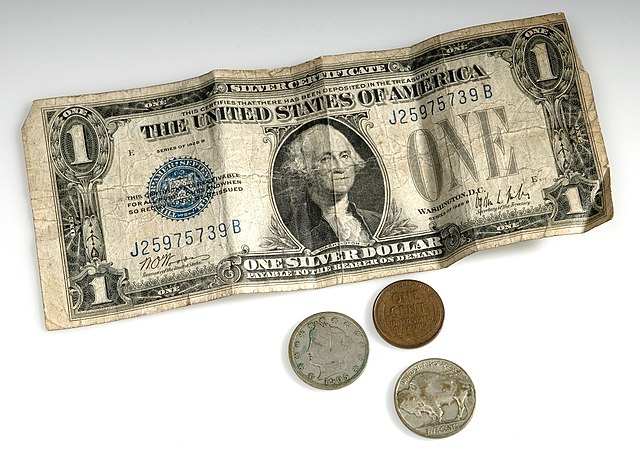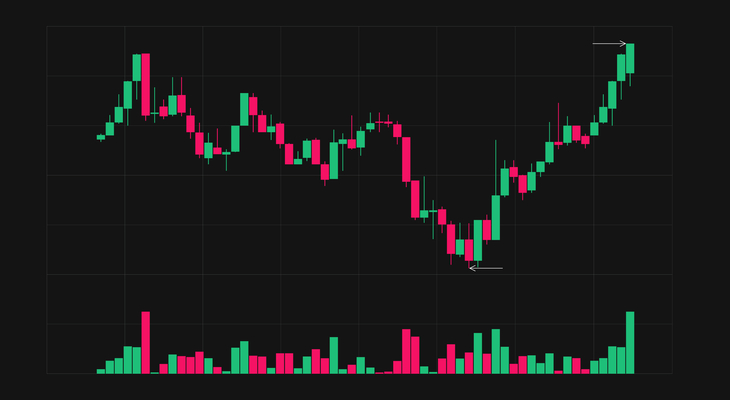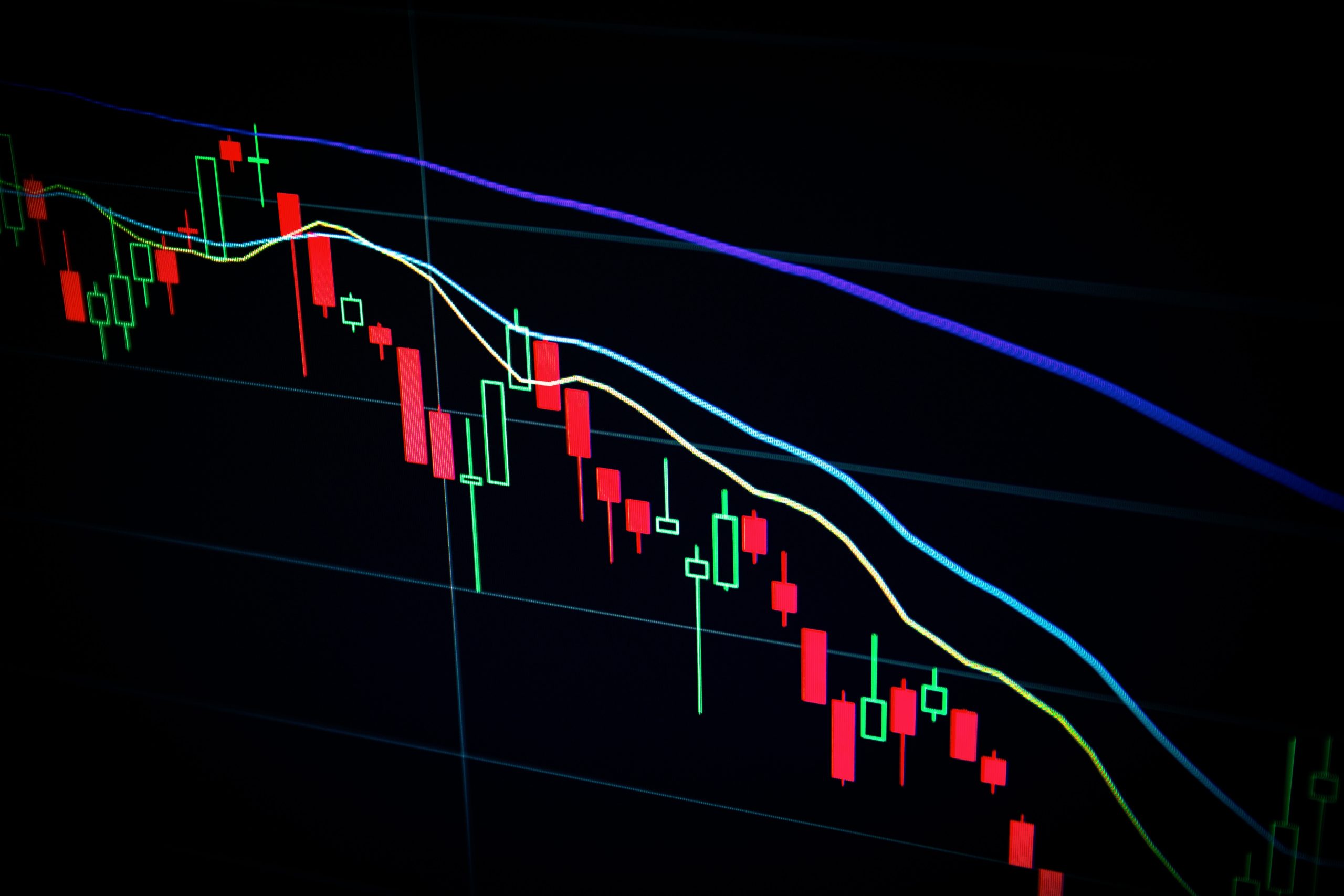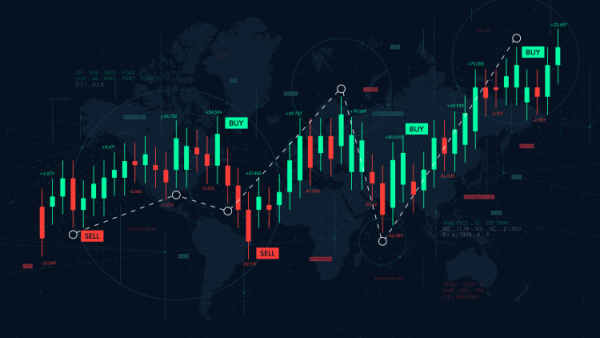Reverse stock splits, like a double-edged sword, can be both beneficial and detrimental for investors. They are often employed by companies to raise the price per share and avoid delisting from major stock exchanges. However, the process can cause high volatility and sideways movement in the stock price, which can lead to uncertainty and risk for investors.
In this article, we will explore the impact of reverse stock splits on investors and provide objective, analytical, and data-driven insights to help them make informed decisions. By examining the causes and process of reverse stock splits, the impact on shares and value, and the delisting and financial issues they address, we will provide a comprehensive understanding of this complex process.
Furthermore, we will analyze the considerations investors must take into account before investing in reverse stock split companies and provide backtest results to support our findings. Ultimately, this article aims to empower investors with the knowledge they need to navigate the complex world of reverse stock splits and make informed and confident investment decisions.
Key Takeaways
- A reverse stock split is a process that changes the number of shares outstanding and directly impacts the price per share, often done by companies with shares below $1 to avoid delisting from major stock exchanges.
- While the announcement of a reverse stock split might boost the price per share in the short term and the first trading day after the stock split often offers good chances for day traders to make profits with the help of high volatility, buy and hold investors do not profit in the long run, and a reverse stock split is a sell signal for existing positions more often than not.
- The overall value of the shares owned does not change during a reverse stock split process, but a delisting usually leads to further financial issues.
- Investors should focus on a company’s health, key financial data, and announced measures that follow the reverse stock split, as a reverse stock split is not necessarily good or bad for investors.
What is it?
A reverse stock split is a process in which a company cancels the current number of outstanding stocks and replaces them with new shares. The primary reason for this action is to polish the company’s image and avoid delisting from major stock exchanges, as shares trading below $1 are subject to delisting. While this process may help the company’s image, it does not solve the underlying financial problems that caused the shares’ decline.
There are pros and cons to a reverse stock split. On the one hand, the announcement of a reverse stock split may boost the price per share in the short term. On the other hand, a reverse stock split is often viewed as a sell signal for existing positions, and buy and hold investors do not profit in the long run.
The first trading day after the stock split often offers good chances for day traders to make short term gains with the help of high volatility. It is important for investors to focus on a company’s health, key financial data, and announced measures that follow the reverse stock split to make informed decisions.
Causes and Process
The reasons behind undergoing a process that alters the number of shares outstanding and directly affects the price per share are often related to the desire to avoid delisting from major stock exchanges and improve the company’s image. A company may undergo a reverse stock split when its shares fall below the minimum threshold price required by stock exchanges, such as $1 for the NYSE and $0.01 for the Nasdaq. This is because stock exchanges have listing requirements that must be met, and a stock price that falls too low is considered a warning sign that the company may not be financially stable. Additionally, a low stock price may make the company less attractive to investors and analysts, which can impact its reputation and ability to raise capital.
To better understand the impact of a reverse stock split on a company’s shares, we can look at a table of selected companies that underwent a reverse stock split in 2020. The table below shows the stock price change on the first day after the reverse stock split and the percentage change in the first half-year of 2020. From the table, we can see that the first day after a reverse stock split is characterized by high volatility, and the opening prices tend to trend sideways towards the closing price. However, the long-term effects of a reverse stock split can vary greatly, with some companies performing well while others experience significant losses. Therefore, it is important for investors to consider a company’s health, key financial data, and announced measures following a reverse stock split before making any investment decisions.
| Company | Stock Price Change on First Day After Reverse Stock Split (%) | Percentage Change in First Half-Year of 2020 |
|---|---|---|
| RENN | +4.17% | +5.67% |
| USEG | +0.27% | +9.97% |
| INPX | -25.93% | -80.00% |
| EYES | -32.43% | -82.00% |
Impact on Shares and Value
Investors must carefully evaluate the correlation between the number of shares outstanding and the price per share, as well as the overall value of the shares owned, when considering a company that has undergone a process that alters these factors.
A reverse stock split, for example, directly impacts the price per share by changing the number of shares outstanding. While the overall value of the shares owned does not change during a reverse stock split process, investors must consider the long-term effects on the company’s financial health.
It is important to note that a reverse stock split does not guarantee excessive gains for new investors or existing shareholders. In fact, a reverse stock split is often a sell signal for existing positions.
While the announcement of a reverse stock split might boost the price per share in the short term, the mean value of the change between open and close on the first day after a reverse stock split is often negative.
Investors should focus on a company’s key financial data, the reasons behind the reverse stock split, and the measures the company plans to take after the process to make informed investment decisions.
Delisting and Financial Issues
Delisting from major stock exchanges can lead to further financial issues for companies that undergo a process that alters the number of shares outstanding and price per share. Delisting usually occurs when a company fails to meet certain financial requirements, such as maintaining a minimum share price or a minimum market capitalization. This can result in a loss of investor confidence, reduced access to capital, and a negative impact on the company’s reputation. Additionally, delisting can make it more difficult for a company to attract new investors, potentially leading to a further decline in stock price and financial performance.
To illustrate the potential consequences of delisting, the following table shows the performance of a few companies that underwent a reverse stock split and faced delisting risk in the first half of 2020. The table highlights the opening and closing prices on the first day after the reverse split and the percentage change in stock price over the first half-year. As shown, INPX and EYES experienced significant losses, while RENN and USEG performed relatively well. These results demonstrate the importance for investors to carefully consider a company’s financial health and measures taken following a reverse stock split to mitigate delisting risk and potential financial issues.
| Company | Reverse Split Date | Open Price | Close Price | % Change |
|---|---|---|---|---|
| INPX | 01/07/2020 | $1.14 | $0.22 | -80.7% |
| EYES | 01/06/2020 | $1.00 | $0.18 | -81.8% |
| RENN | 05/20/2020 | $1.07 | $1.47 | +37.4% |
| USEG | 06/08/2020 | $0.40 | $1.75 | +337.5% |
Investor Considerations
When evaluating a company’s financial health, it is important to analyze key financial data and measures taken following a share restructuring process to mitigate the risk of negative consequences. After a reverse stock split, investors should consider the following:
- The company’s financial stability and profitability
- The reasons for the reverse stock split, such as to avoid delisting or to polish the company’s image
- The potential impact on the price per share in the short term, including any boost from the announcement of the reverse stock split
- The likelihood of excessive gains for new investors or existing shareholders
Investors should also be aware that a reverse stock split is not necessarily good or bad for them. While day traders may have opportunities for short term gains on the first trading day after the reverse stock split, buy and hold investors do not typically profit in the long run. Ultimately, it is important to focus on a company’s health and announced measures following a reverse stock split to make informed investment decisions.
In addition to analyzing financial data and measures, impact analysis should also be conducted after a reverse stock split. This includes evaluating the volatility on the first day after the reverse stock split and the opening prices’ tendency to the closing price on that day, which is often sideways.
While the announcement of a reverse stock split may boost the price per share in the short term, the process of doing a technical cleanup of the price per share does not solve a company’s financial problems. Therefore, investors should exercise caution and consider all factors before making investment decisions following a reverse stock split.
About the Author
Having discussed the investor considerations when dealing with reverse stock splits, it is essential to understand the author’s background in the financial markets.
Alexander, the founder of daytradingz.com, has over two decades of trading expertise, making him an authority on the subject. His aim is to simplify trading and investing for everyone by breaking down complex concepts and making them understandable for the average person.
In his quest to make trading and investing accessible to all, Alexander has been featured in major publications such as Benzinga, Business Insider, Investors Business Daily, Newsweek, GOBankingRates, capital.com, and investing.com. His experience and expertise in the financial markets make him a valuable source of information for anyone looking to navigate the complexities of stock trading and investing.
Overall, Alexander’s insights provide a unique perspective on reverse stock splits, backed by years of experience and a deep understanding of the financial markets.
Frequently Asked Questions
Are there any regulations or rules governing when a company can do a reverse stock split?
Regulatory requirements for a reverse stock split vary depending on the stock exchange where the company is listed.
In general, exchanges require companies to notify them of any planned reverse stock split and to comply with specific rules and regulations.
For example, the New York Stock Exchange requires companies to meet minimum price and market capitalization requirements after the reverse stock split.
The market impact of a reverse stock split can be significant, as it often signals financial distress and can lead to a decrease in the price per share.
However, a reverse stock split can also be a strategic move to avoid delisting and attract more attention from analysts.
Ultimately, whether a reverse stock split is beneficial for investors depends on the company’s financial health and announced measures following the split.
Can a reverse stock split lead to a change in a company’s financial health or profitability?
Reverse stock splits, like traditional stock splits, can lead to changes in a company’s financial health or profitability. However, the impact on investor sentiment may differ between the two types of splits.
While traditional stock splits are generally seen as a positive sign for a company, reverse stock splits are often viewed as a signal of financial distress. This can lead to negative perceptions among investors and a decrease in stock value.
Additionally, reverse stock splits do not address the underlying financial issues that led to the need for the split in the first place, and may even exacerbate these issues in the long run.
Ultimately, the impact of a reverse stock split on a company’s financial health and profitability will depend on a variety of factors, including the company’s overall financial health, investor sentiment, and the effectiveness of any measures taken to address underlying issues.
How does a reverse stock split affect the voting rights of shareholders?
A reverse stock split can impact the voting rights of shareholders. The number of shares outstanding decreases, which means that the number of votes each shareholder has also decreases.
However, the proportion of votes they hold in relation to the total number of outstanding shares remains the same. Shareholders with larger holdings may still have a significant impact on corporate governance decisions.
It is important for investors to consider the potential impact on their voting power when evaluating a company’s decision to pursue a reverse stock split. Ultimately, the decision should be made based on the company’s financial health and goals, rather than solely on the impact on voting rights.
Are there any potential negative consequences for a company that undergoes a reverse stock split?
What are the potential drawbacks of a reverse stock split?
One of the key factors to consider is shareholder dilution. When a company undergoes a reverse stock split, it reduces the number of outstanding shares, which can lead to an increase in the share price, but it can also have negative consequences.
Shareholders may experience a reduction in the value of their holdings due to the decrease in the number of shares outstanding. Furthermore, reverse stock splits can be a sign of financial difficulties, which can lead to a decline in investor confidence.
Therefore, it is important for investors to thoroughly analyze a company’s financial health and future prospects before investing in a company that has undergone a reverse stock split.
Can a reverse stock split be used as a tactic to artificially inflate a company’s stock price?
Artificial inflation of a company’s stock price through a reverse stock split raises ethical concerns.
While a reverse stock split can increase the price per share, it does not improve the company’s financial health or address underlying issues.
The process of canceling and replacing shares is a technical cleanup that does not guarantee excessive gains for new investors or existing shareholders.
Moreover, a reverse stock split is often a sell signal for existing positions and may not benefit buy and hold investors in the long run.
Investors should focus on a company’s health and key financial data rather than the announcement of a reverse stock split.
Companies should avoid using this tactic to manipulate the market and prioritize transparency and long-term growth.
Conclusion
Reverse stock splits are a common strategy used by companies to avoid delisting from major stock exchanges. While the announcement of a reverse stock split may temporarily boost the price per share, the first trading day after the split often sees high volatility and a tendency towards sideways movement.
It is important for investors to understand the impact of reverse stock splits on their investments and to consider the reasons behind a company’s decision to implement one.
According to a backtest analysis of reverse stock splits between 2000 and 2019, the average one-day return after a reverse split was -1.04%, while the average one-month return was -2.75%. This suggests that investors should not expect significant gains from reverse stock splits and should carefully consider their investment strategies before making any decisions.
It is also important to note that reverse stock splits do not solve a company’s financial problems and should not be viewed as a long-term solution. Investors should conduct thorough research on the company’s financial health and overall performance before investing in a company that has implemented a reverse stock split.
By considering the impact of reverse stock splits on their investments and conducting thorough research, investors can make informed decisions and minimize their risks.










